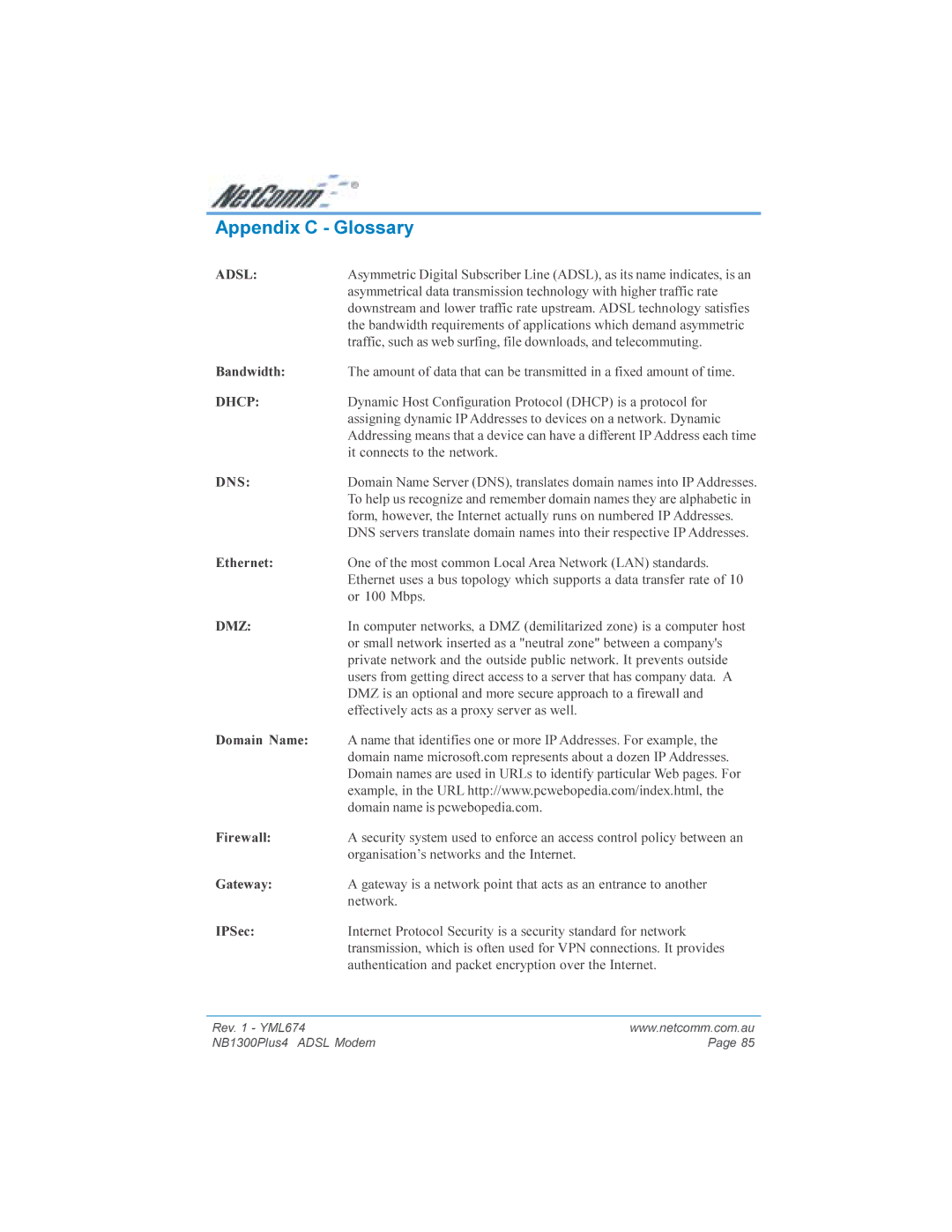
Appendix C - Glossary
ADSL: | Asymmetric Digital Subscriber Line (ADSL), as its name indicates, is an |
| asymmetrical data transmission technology with higher traffic rate |
| downstream and lower traffic rate upstream. ADSL technology satisfies |
| the bandwidth requirements of applications which demand asymmetric |
| traffic, such as web surfing, file downloads, and telecommuting. |
Bandwidth: | The amount of data that can be transmitted in a fixed amount of time. |
DHCP: | Dynamic Host Configuration Protocol (DHCP) is a protocol for |
| assigning dynamic IP Addresses to devices on a network. Dynamic |
| Addressing means that a device can have a different IP Address each time |
| it connects to the network. |
DNS: | Domain Name Server (DNS), translates domain names into IP Addresses. |
| To help us recognize and remember domain names they are alphabetic in |
| form, however, the Internet actually runs on numbered IP Addresses. |
| DNS servers translate domain names into their respective IP Addresses. |
Ethernet: | One of the most common Local Area Network (LAN) standards. |
| Ethernet uses a bus topology which supports a data transfer rate of 10 |
| or 100 Mbps. |
DMZ: | In computer networks, a DMZ (demilitarized zone) is a computer host |
| or small network inserted as a "neutral zone" between a company's |
| private network and the outside public network. It prevents outside |
| users from getting direct access to a server that has company data. A |
| DMZ is an optional and more secure approach to a firewall and |
| effectively acts as a proxy server as well. |
Domain Name: | A name that identifies one or more IP Addresses. For example, the |
| domain name microsoft.com represents about a dozen IP Addresses. |
| Domain names are used in URLs to identify particular Web pages. For |
| example, in the URL http://www.pcwebopedia.com/index.html, the |
| domain name is pcwebopedia.com. |
Firewall: | A security system used to enforce an access control policy between an |
| organisation’s networks and the Internet. |
Gateway: | A gateway is a network point that acts as an entrance to another |
| network. |
IPSec: | Internet Protocol Security is a security standard for network |
| transmission, which is often used for VPN connections. It provides |
| authentication and packet encryption over the Internet. |
Rev. 1 - YML674 | www.netcomm.com.au |
NB1300Plus4 ADSL Modem | Page 85 |
